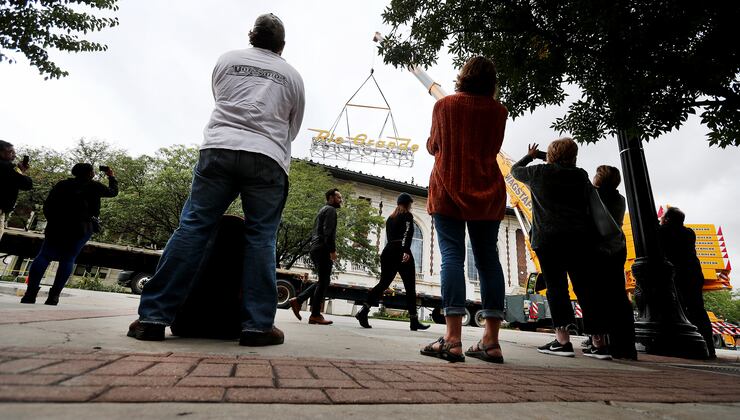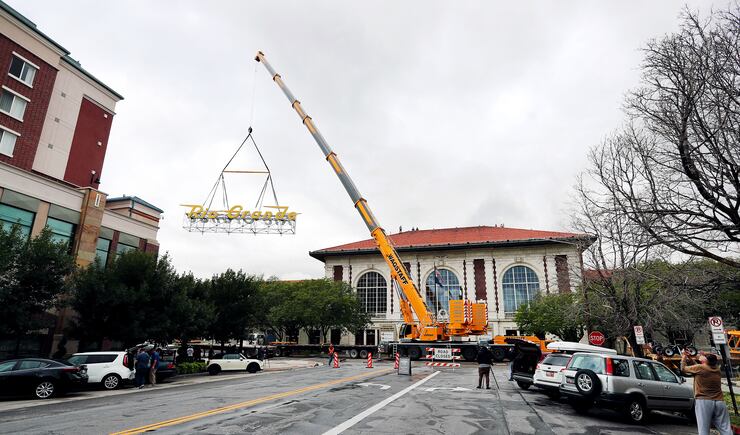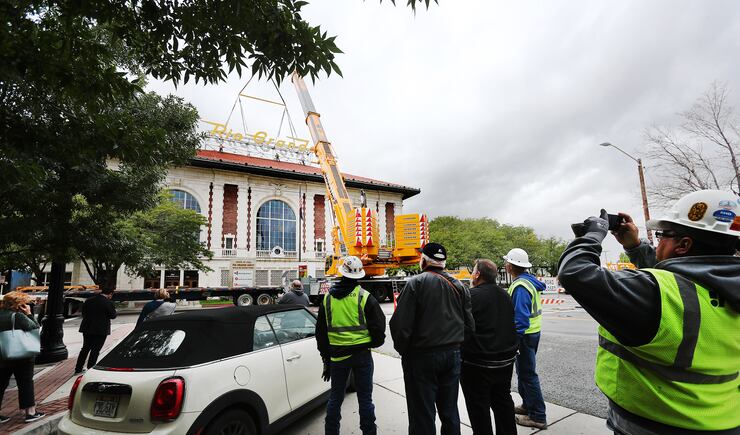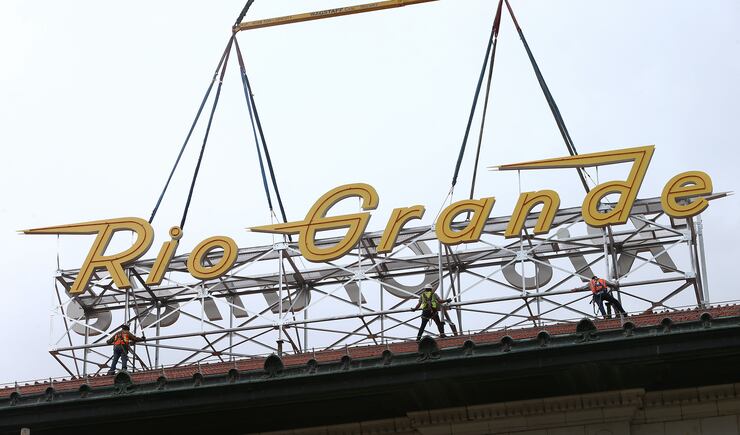SALT LAKE CITY — The iconic Rio Grande Depot’s historical, decades-old sign was replaced Friday with a newer, nearly identical version.
The main difference? It’s two-sided, so onlookers from both the east and west can now see the landmark for a key part of Utah’s history.
The sign for the Rio Grande Depot — which once ushered in rail travelers to Utah’s capital and now echoes history in Salt Lake City’s downtown — was replaced due to yearslong maintenance troubles related to the aging neon sign, which is estimated to have sat atop the Depot dating back to the ’50s.
The new sign, now with LED lights, was designed to nearly match its storied predecessor.
“We’re preserving the sign and making sure it will be shining from the one of the most iconic buildings, one of the most historic buildings in the state,” said Josh Loftin, spokesman for the Utah Department of Heritage and Arts.




The new sign will be the third on the roof of the Depot, located at 300 S. Rio Grande St.
The Depot, listed on the National Register of Historic Places in 1975, was purchased by the state of Utah for $1 in 1977. The depot is currently home to the State of Utah’s Department of Heritage and Arts, including offices for State History, UServe Utah, and the Rio Gallery.
Although the building was constructed in 1910, it did not have a rooftop sign until about 1940. That first sign was tri-faced, welcoming visitors from east, west and north.
The Rio Grande neon sign was installed in the late 1950s to replace the Denver and Western Rio Grande sign. The neon sign was one-sided and faced east to cement that side as the front entrance.
For years, officials at the Utah Department of Heritage and Arts weighed what to do with the neon sign, plagued with maintenance issues as crews struggled to find replacement parts as it aged. The frame holding the sign also became dilapidated, and contractors would not allow crews to walk on the catwalks to make repairs, according to the Utah Department of Heritage and Arts.
The new, two-sided design of the replacement sign was submitted after more than two years of review, including a Historic Preservation Compliance application from the Utah Division of Facilities and Construction Management, which worked with the State Historic Preservation Office. As part of the application, organizations including the Salt Lake City Historic Landmarks Commission, the Salt Lake City Redevelopment Agency, Downtown Alliance, Preservation Utah, the Pioneer Park Coalition and the Rio Grande Cafe’s ownership were consulted. A public hearing was also held in January.
In April, the Salt Lake City Planning Division approved the new two-sided design.
The replacement was funded using about $250,000 from the Utah Division of Facilities and Construction Management budget, Loftin said.
As for the old sign? Loftin said Friday the Department of Heritage and Arts doesn’t have room for it in its basement currently storing artifacts and was trying to find a home for it. Early Saturday he said state officials have decided to give the sign to the Heber Valley Historic Railroad Authority for preservation.






